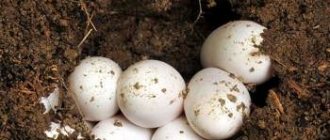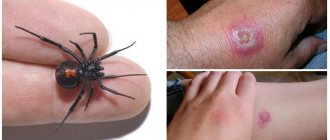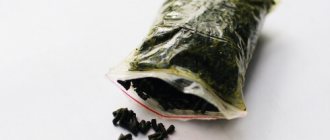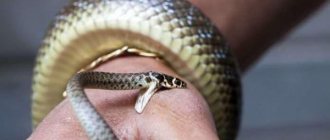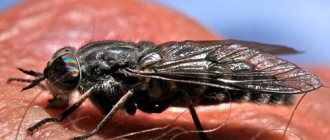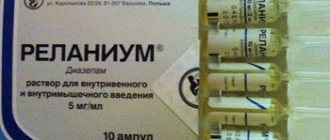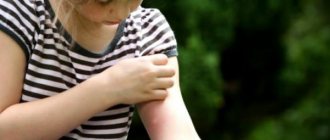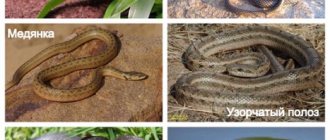Let's start getting acquainted
Overall, there are about 270 species of slate snakes (which include the cobra and relatives such as the taipan, mamba, and others). There are about 28 species of cobras.
Is the cobra aggressive?
Most cobras are shy and will run and hide when they encounter people. The exception is the King Cobra, which is poisonous and aggressive. She will attack if you run into her.
Watch the video - cobra bite Austin Stevens
What is unique about them?
This is one of the supernatural facts about the cobra: it is the only snake in the world that can spit venom!
Can they see?
Snakes are not blind; they see very well even at night.
Cobras have a "Jacobsen's Organ" (like most snakes), which gives them superpowers. They can sense the slightest changes in temperature, allowing them to track prey at night.
Can they hear?
They sense sound through contact with the ground much better than humans.
How many years do they live?
Cobras live up to 20 years or more when in the wild.
How dangerous is the poison?
It is not the strongest, but the cobra delivers so much venom in one bite that it can easily kill an elephant. Sea snakes have a deadly venom, rattlesnakes have a weaker venom.
Occurrence of the disease Snake bite
The king adder is typically distinguished by alternating red and black stripes separated by yellow rings; however, there are also black varieties and albinos. King adders are typically nocturnal, shy and elusive, and rarely bite humans. Their poisonous teeth are short and constantly in an upright position. The highly toxic poison is injected into numerous teeth puncture wounds.
Pit-headed snakes are so called because they have a small pit between the eye and nostril. Large venom glands located in the temporal regions give the snake's head a triangular shape. These snakes are usually aggressive and there is a good chance that if their peace is disturbed they will attack. Their poisonous teeth are long and can turn and fold backward when the mouth is closed. Pit snakes attack suddenly, throwing their heads forward. At the moment when the poisonous teeth, which have taken a vertical position, come into contact with the victim, the muscles suddenly contract and poison is released.
Rattlesnakes are widely distributed and are recognized by the horny rattle located on the snake's tail, which rattles when the snake is irritated. Diamondback rattlesnakes (Crotalus adamanteus in the southeastern part of the country and C. atrox in the southwestern part) are the largest and most dangerous snakes. Others include the prairie rattlesnake (C. confluentus), timber rattlesnake (C. horridus), and pygmy rattlesnakes.
The water muzzle (Agkistrodon piscivorus) is common in marshy areas or along river banks. It is an excellent swimmer and can bite underwater. This snake is notorious for causing suffering with severe bites to the face when disturbed among the branches of a bush. The moccasin snake (A. mokasen) is a very close relative of the water moccasin. Its bite is painful but rarely causes death.
What do cobras eat?
The cobra happily eats birds, fish, frogs, toads, lizards, eggs and chicks, in addition to small mammals such as rabbits, rats, even other snakes.
Did you know that Cobra is at the top of the food chain? Their natural predators are only mongooses, a few large birds of prey such as the secretary bird, and humans, of course.
They are smart?
Cobra is very smart and learns quickly, which helps it avoid dangerous areas.
Video – a king cobra dying of thirst crawled towards people
How does poisoning occur?
Although a cobra is a dangerous snake, it will never attack a person without reason.
In most cases, the person himself is to blame for becoming a victim of a reptile attack. How do snake attacks most often occur?
A person carelessly steps on a snake, or climbs towards it, poking it with a stick. There are often cases when people going on an overnight picnic with a tent do not close the doors tightly, and the snake can crawl into bags, backpacks, and when a person takes his things in the morning, the snake, considering this as a threat, bites.
Reptile venom contains a complex of various substances that have a toxic effect on all internal organs and life support systems of the body.
Timely diagnosis of poisoning from a cobra bite is complicated by the absence of pain syndrome in humans.
If a snake bites in tall grass and a person does not notice the cobra, the venom sprayed by the snake contains a special toxin that has an analgesic effect, and the person does not feel the moment of the bite.
How can you tell if a cobra is preparing to attack? By its nature, this type of snake is very calm. She will never attack first, but people, showing an unhealthy interest in beautiful snakes, often provoke them themselves.
If the snake begins to inflate its hood, this means that it considers the person pestering it as a threat to its life, and is ready to attack. Cobras are very fast, and it is quite difficult to escape from them.
How dangerous are the cubs?
It may seem surprising, but a baby cobra is full of strength and neurotoxins.
He is able to protect himself just like his parents! So don't be tempted to play with the cute snakes.
Baby snake video
Where are they deified?
Cobras are revered in India and Southeast Asia. Hindus consider them to be a manifestation of Shiva, the god of destruction and regeneration.
Buddhists believe that a huge cobra spread a hood over the Buddha to protect him from the sun while he meditated.
Her images guard the entrances of many Buddhist and Hindu temples. She was worshiped as a deity and associated with rain, thunder, and fertility.
During the annual moon festival of Nagapanch, Hindus refrain from plowing and field work out of respect for cobras.
King Cobra, also known as Ohiophagus Hannah, eats other snakes!
The Latin word Ophiophagus translates to "man-eating snake." They live in South Asia and North Africa. Other species of cobras live in Australia, New Guinea, and most of the Eastern Hemisphere.
The King Cobra is the only snake in the world that builds a nest for its young, like a bird, but on the ground!
How to protect yourself - preventive measures
Cobras do not live in the CIS countries. When going on a trip to exotic countries, a person should know preventive measures that will help protect themselves from attacks by poisonous reptiles:
- Do not try to get close to the cobra; if you encounter a snake on the way, you need to get around it as far as possible. Touching the snake with your hands or a stick is strictly prohibited.
- It is strictly forbidden to walk barefoot in places where dangerous reptiles live. Shoes should have high, thick soles.
- If there is a need to walk through tall grass, which may contain reptiles, you need to touch the ground in front of you with a long stick and wear high, thick boots.
- If tourists spend the night in a tent, the entrance to it must be permanently closed. Before taking your belongings out of bags or backpacks, you must first shake them out.
- Do not stop overnight in places where there are stones (snakes often live among stones), holes of mice and other rodents, or frogs, which are food for cobras.
- It is strictly forbidden to stick your hands into cracks, hollows, under stones, or snags.
- When stopping for a rest, you need to stomp your feet as much as possible, this creates vibrations on the ground that scare away reptiles.
- Do not make long treks at night, when cobras and other snakes are at their peak of activity.
A snake bite is especially dangerous for small children; in most cases it is impossible to save a child from a cobra bite. Parents need to explain exactly why snakes are dangerous and how to behave when meeting them.
It is important to remember that a cobra snake bite is fatal to humans. Even with a slight ingress of poison into the wound, when a person sees that most of the toxic substance remains on the clothing, this does not indicate that the bite will not lead to negative consequences.
It is necessary to provide first aid and immediately transport the injured person to the hospital in any case, every minute of delay can cost a life!
Urgent First Aid for King Cobra (Ophiophagus Hannah) Bites
In the event of an actual or potential bite from King Cobra, follow the following first aid measures without delay.
Contact your doctor immediately.
For the victim
- Calm the victim.
Avoid movement as much as possible. If possible, place the bitten limb at a lower level than the heart. - Immediately wrap a large bandage around the injury, starting at the bite site and proximally along the limb (full length if possible). The bandage should be as tight as it can be to bandage a sprained ankle.
- Secure the splint to the bandaged limb to keep it as immobile as possible. Avoid bending or moving the limb.
- Do not remove the bandages until the victim has reached the hospital and received the antidote.
- You can't cut the wound.
- Do not apply ice to the bite site.
The bite of a king cobra becomes fatal quickly (within 30 minutes).
Please read and follow the following procedures without delay.
- Ensure that at least 10 vials of Tiger Snake Antivenom are present with the patient. This antivenom is highly paraspecific, containing the appropriate fractions necessary to neutralize the components of king cobra venom.
- Treatment is 4 to 15 vials of intravenous antivenom. Intoxication is diagnosed by the presence of characteristic signs and symptoms.
Signs and symptoms of intoxication
Neurological and neuromuscular: These signs and symptoms, if they occur, usually appear first (perhaps within 15 to 30 minutes after the bite). Not all of them will necessarily develop, even with severe intoxications.
- Drowsiness,
- Drooping eyelid (ptosis)
- Respiratory paralysis, shortness of breath (often severe shortness of breath with early onset),
- Ophthalmoplegia,
- palatal paralysis,
- Glossopharyngeal paralysis,
- limbo paralysis
- Cramps,
- Neck paresis or paralysis
- Hyporeflexia,
- Headache,
- Sudden loss of consciousness
- Stone gait (ataxia).
General: These symptoms usually appear one to four hours after the bite. The pain usually starts immediately.
- Hypotension with irregular peripheral impulses,
- Warm skin
- Pain around injury
- Nausea, vomiting,
- Abdominal pain,
- Hives, fever.
Cardiotoxicity
No direct clinical cardiotoxic effects have been reported. Clinical monitoring of heart function and rhythm may be advised.
Kidney signs
Nephrotoxic effects also do not appear, but have been seen in attacks by Mamba, Taipan and other aspidids. Oliguria or anuria with possible changes in urinary composition will herald the development of renal arrest. Dialysis is recommended.
Local symptoms
In some cases, destruction of local tissue and extensive necrosis occurs. Swelling may extend proximally to the bitten limb to form a blister. Gangrene requires amputation. Local tissue damage includes:
- Localized dark discolored skin,
- Serous-hemorrhagic vesiculation,
- Secondary bacterial infection (Proteus vulgaris was cultured in one case),
- Necrosis with tissue twisting (can be extensive, but most likely remains localized at the site of injury),
- Local swelling (extends proximally).
Medical treatment
- Start with a peripheral intravenous infusion (16 gauge) of lactated Ringer solution at a rate of 250 ml/hour.
- Antivenom is the mainstay of treatment for king cobra envenomations. Many symptoms are alleviated or completely eliminated by it. Other symptoms will require additional therapy.
- Neurological symptoms (especially respiratory obstruction, failure) predominate in the clinical picture.
- If the bite develops signs suggestive of infection, Culture and Sensitivities should be obtained before initiating appropriate antibiotic therapy.
It is important that neutralization of the poison occurs continuously. Typically 4-6 ampoules are used for minor wounds. 8-20 ampoules are needed for moderate to severe bites.
- It is advisable to perform periodic blood and urine tests during therapy.
- The patient should be observed in hospital for at least 24 hours after symptoms have stabilized.
Symptomatic picture
The clinical picture of local action is weak or absent altogether. There is no swelling or redness at the site of the bite; in some cases, peeling of the skin at the site of the bite is possible. For the most part, poison intoxication affects the central nervous system. Signs of intoxication are as follows:
- sudden overexcitement;
- immediately after temporary excitement - apathy and drowsiness, lethargy;
- difficulty breathing;
- dyspnea;
- nausea;
- gagging;
- attacks of dizziness;
- fainting conditions;
- decreased visual acuity;
- spasms of the upper and lower extremities;
- throat paralysis;
- numbness of lips;
- difficulty swallowing;
- speech dysfunction;
- swelling of the eyelids;
- increased salivation;
- profuse sweating;
- urinary incontinence;
- fecal incontinence;
- rapid decrease in blood pressure;
- heart rhythm disturbance.
Paralysis is the main symptom of cobra poisoning.
Paralysis of the body begins gradually, first paralyzing the upper and lower limbs, then the organs of the respiratory system are paralyzed. If first aid is not immediately provided and the person is taken to the hospital, death occurs within a few hours.
General measures
- It is important that the patient is at rest, warm, and avoids unnecessary movements.
- The onset of dangerous neurotoxic symptoms can be rapid. Wake the patient and perform a brief neurological check every hour to ensure that breathing and other vital signs are not deteriorating.
- If breathing difficulties develop, respiratory support will be required.
- Intravenous administration is always most appropriate. Blood replacement is not required until the anticoagulant poisons have been completely neutralized.
- If there are signs of swallowing problems, do not give ANYTHING orally.
- Morphine is contraindicated due to its tendency to cause respiratory depression. Alcohol should also be avoided. Diazepam (Valium) may be given, but not in large quantities.
- Tetanus vaccination must be current.
- Antibiotics are not recommended.
Providing first aid and drug therapy
The only method of treating a cobra bite is to inject a special serum into the victim’s body.
Naturally, being in nature, no one can take an antidote with them. To save a person’s life, it is necessary to deliver him to a medical facility as quickly as possible, providing first aid. The future prognosis depends on how correctly others act. The algorithm of actions in case of a cobra attack is as follows:
- Position the patient lying down, with the head at a lower level in relation to the body.
- Carefully review all the clothes the person was wearing during the cobra attack; often most of the poison remains on the sleeve or pant leg; it must be removed.
- Rinse the wound with excess water.
- It is advisable that within the first 5 minutes after the bite, the poison should be drawn out from the wound with a syringe or an enema (rubber bulb). It is recommended to suck out poison with your mouth only if there are no wounds, ulcers, bites on the mucous membrane in the oral cavity, or dental diseases. The person who will suck out the poison with his mouth must periodically spit, and upon completion of the procedure, thoroughly rinse the oral cavity with a weak solution of potassium permanganate.
- After removing the poison, the wound is washed with soapy water.
- The bite site is covered with a bandage made of clean cloth or a piece of bandage; the bandage should not put pressure.
- To reduce the rate of spread of poison throughout the body through the circulatory system, it is necessary to tighten the tourniquet above the bite site, but you can hold the tourniquet for no more than half an hour.
- The absorption rate will also slow down by applying a cold object to the wound (ice, a piece of cloth that must be constantly moistened in cold water).
- The injured limb must be statically fixed. To do this, use a splint as for a fracture (in the absence of a special medical splint, a piece of stick or board can play its role).
- The injured person is provided with plenty of plain water to drink. You can drink tea, coffee, mineral water.
- Give the victim a drink with a diuretic effect - Furosemide, or a large amount of coffee.
- If you have antihistamines in your travel kit, you need to take a few tablets; they will slightly slow down the development of the symptomatic picture.
Special measures
Multiple bites
It is possible for King Cobra to deliver more than one bite in a single attack. If there is evidence that such an attack has occurred (i.e., history or multiple bite sites), increase the initial dose of antivenom twice: FOUR ampoules (12,000 units) diluted in Lactated Ringer's solution to a total volume of 240 ml administered over 30 minutes at a rate 8 ml per minute (4 bottles for 30 minutes or 400 units per minute).
Severe intoxication
If the patient shows serious signs of intoxication, increase the initial dose by 2-3 times. Dilute the volume 1:10 in lactated Ringer's solution and administer over 30 minutes. If a person is under extreme fluid load, the antidote is given in more concentrated volumes.
Horse protein testing
- The use of subcutaneous or intradermal sensitivity testing is NOT RECOMMENDED as it may be unreliable and will unnecessarily delay therapy that should be used immediately.
- If there is reason to believe that there is a sensitivity to horse protein products (for example, an antivenom was used in a previous snake bite in which a reaction was noted):
- Enter 1 gram of Solumedrol.
- Wait 15 minutes.
- Administer antivenom at a rate as tolerated, starting at 3 mL/min (i.e., 150 units/min).
- Check your pulse and blood pressure carefully. Be prepared to treat anaphylaxis with epinephrine and other vasoactive drugs.
Clinical experience
- King Cobra is the largest venomous snake in the world, reaching a length of 18 feet. Although its venom is less toxic than that of other, smaller cobras, its volume per bite is enormous. Thus, any aggravated assault with clinical signs of intoxication quickly leads to a life-threatening situation. In the wild, the cobra feeds almost exclusively on other snakes.
- Widely distributed in South Asia, the King Cobra is not often found in the wild and rarely causes harm. The attack often results in quick death. Sometimes dry bites or mild intoxication occur.
- Several clinical cases have been recorded. Neurotoxic syndrome, early respiratory paralysis, loss of consciousness progresses rapidly. Delay in treatment or insufficient antidote dosage allow neurological symptoms to progress.
Large volumes of antivenom are needed to reverse worsening symptoms, but recovery is almost always slow.
Watch a scientific documentary about the king cobra
Features of the attack
A characteristic feature of these snakes is that they can use special muscles to close the poisonous ducts, thereby regulating the amount of substance introduced into the victim’s body. It depends on the size of the object, however, the doses always exceed lethal ones.
In the king cobra, proteins produced by the venom glands have a neurotoxic effect, i.e., nerve innervation and regulation are completely blocked. This makes it impossible to contract various muscles, which leads to difficulty in breathing, and the heart stops contracting.
The result is death. If, during a bite, 7 ml of poison is injected into the human body, then death occurs within 15 minutes.
When meeting a person, unlike other dangerous relatives, the king cobra does not immediately produce a poisonous bite.
At first, attempts are made to scare away:
- an attack is made with the head, blows are struck to the body;
- false attacks are made;
- barking sounds are made (contractions of the respiratory apparatus);
- The first bites do not inject toxins into the body.
It takes a lot of time and energy to produce venom, so snakes prefer to use toxins solely for food and are extremely reluctant to use it for defense. The king cobra is characterized by a low degree of aggression and patience.
If a situation occurs when a person finds himself in front of an animal in an attack pose (standing with the hood spread out, slightly tilted back), then you need to:
- keep calm;
- remain silent, do not make sudden movements;
- don't turn your back;
- take a position to be at eye level with the snake, for example, a net;
- do not move, breathe evenly and look at the snake.
The cobra, having made sure that nothing threatens it, in the vast majority of cases will crawl away on its own in a few minutes. Nevertheless, quite a lot of bites are recorded, but only 10% of cases result in death, for example, in India, approximately 50 thousand people die from this type of reptile every year.
Important. When meeting a cobra, you should not panic. The animal will crawl away on its own if it is sure that the person does not pose a threat to its life.
Snakes are most vulnerable during the molting period, which lasts a week and a half on average 5 times a year, so they try to hide in shelters where it is warm. Often at this time, reptiles choose human buildings as a temporary shelter, which causes many problems.
Cobras are most aggressive when heating the masonry. Moreover, it is rare for snakes to build a nest and take care of their offspring. At this time, females attack anyone who approaches her eggs. Even elephants are attacked - a large animal can die if bitten in the trunk or finger.
A few days before the babies appear, the mother leaves the nest in search of food, because she can eat the offspring. The young hatch poisonous and in the first 24 hours are still in the laying site, eating the yolk, and then crawl away. The babies are very vulnerable despite the presence of toxins - on average, out of 25 snakes, one or two snakes survive to adulthood.
Notes
- ↑ 1 2 Ananyeva N. B., Borkin L. Ya., Darevsky I. S., Orlov N. L.
Five-language dictionary of animal names. Amphibians and reptiles. Latin, Russian, English, German, French. / under the general editorship of academician. V. E. Sokolova. - M.: Rus. lang., 1988. - P. 350. - 10,500 copies. — ISBN 5-200-00232-X. - Mehrtens, John.
Living Snakes of the World. - New York: Sterling, 1987. - ISBN 0806964618. - Glenday, Craig.
Guinness World Records 2008. - Bantam. — 2008. — P. 64. — 640 p. — ISBN 978-0553589955. - Doctor of Poisonous Sciences // Science in Focus. - 2011. - No. 9[001] September. — P. 104.
- ↑ 12
How the King Cobra Maintains Its Reign. The New York Times (26 October 2010). Retrieved March 30, 2012. Archived May 31, 2012. - Akimushkin, I. I.
Poisonous asps // Animal World: Birds. Fish, amphibians and reptiles. — 3rd ed. - M.: Mysl, 1995. - P. 444-446. — 462[1] p. — ISBN 5-244-00803-X.
Habitat
Cobras mainly inhabit the Old World - Africa (almost the entire continent), South and Central Asia (Pakistan, India, Sri Lanka). As already mentioned, this Cobra is very thermophilic - it will not live where snow falls and lies in winter. The only exception, perhaps, is She lives in Turkmenistan, Uzbekistan, and Tajikistan. The drier the places, the more preferable they are for these reptiles. Most often they choose bushes, jungles, deserts and semi-deserts. Sometimes they can be seen on river banks, but most often they avoid wet places. Cobra is also found in mountainous areas, but not higher than 2400 meters above sea level.
Reproduction
These snakes breed once a year. Most often this happens in January-February or spring. The fertility of these reptiles largely depends on their species. One female can lay from eight to seventy eggs.
The collared cobra is the only one of all species that gives birth to live young. She is capable of giving birth to up to sixty babies. During this period, the king and Indian cobras can be very aggressive. They protect their offspring by driving away animals and people from the nest. This behavior is not typical for them and appears only during the period of breeding.

